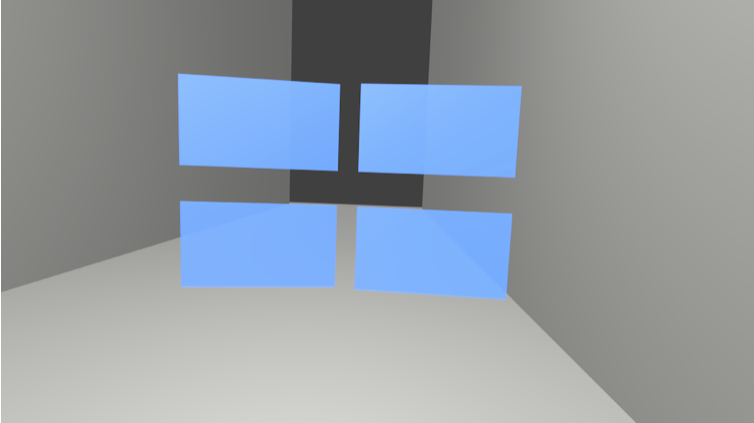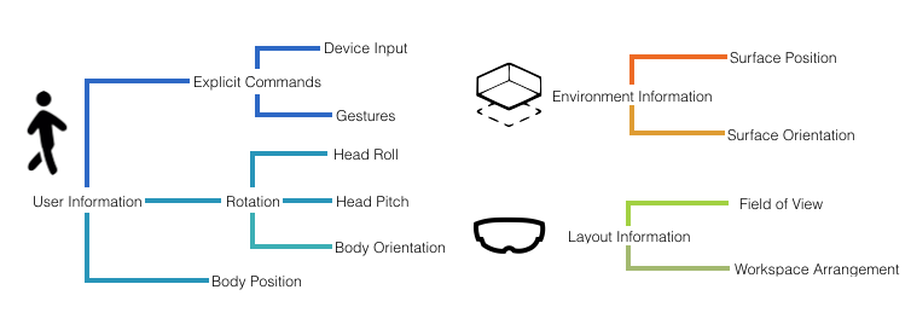AR Workspaces
Augmented reality will eventually replace our mobile devices as the primary way of accessing information. However, current interfaces provide little support to walking and the variety of actions we perform in the real world. To achieve its full potential, augmented reality interfaces must support the fluid way we move in the world.
|
Our vision for this project was to use adaptation to: 1) support the use of AR interfaces while walking; and 2) minimize the effort required to adjust the layout to a new environment. Within all the possible sources of position adaptation, we focused on those that could be easily obtained from sensors available in AR headsets, in particular: 1 - information about the user position in space (e.g., body position, orientation, or speed); 2 - information about the physical surroundings (e.g., position of walls and other surfaces); and 3 - information about the current layout (relative position of the windows to each other and in the field of view). We explored how different adaptation strategies can contribute towards this goal. We evaluated design alternatives through contextual studies and identified the key interaction patterns that interfaces for walking should support. We also identified desirable properties of adaptation-based interface techniques, which can be used to guide the design of the next-generation walking-centered augmented reality workspaces |
|
Lages, W., & Bowman, D. (2019, October). An Adaptive Interface for Spatial Augmented Reality Workspaces. In Symposium on Spatial User Interaction (p. 32). ACM. doi.org/10.1145/3357251.3360005
|
|
Lages, W. S., & Bowman, D. A. (2019, March). Walking with adaptive augmented reality workspaces: design and usage patterns. In Proceedings of the 24th International Conference on Intelligent User Interfaces (pp. 356-366). ACM. DOI: https://doi.org/10.1145/3301275.3302278
|
Team: Wallace Lages & Doug Bowman
Sponsored by: Office of Naval Research
Sponsored by: Office of Naval Research




